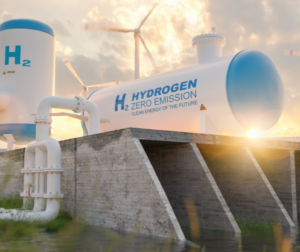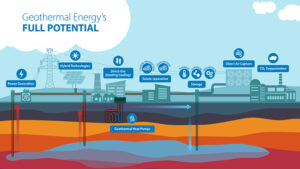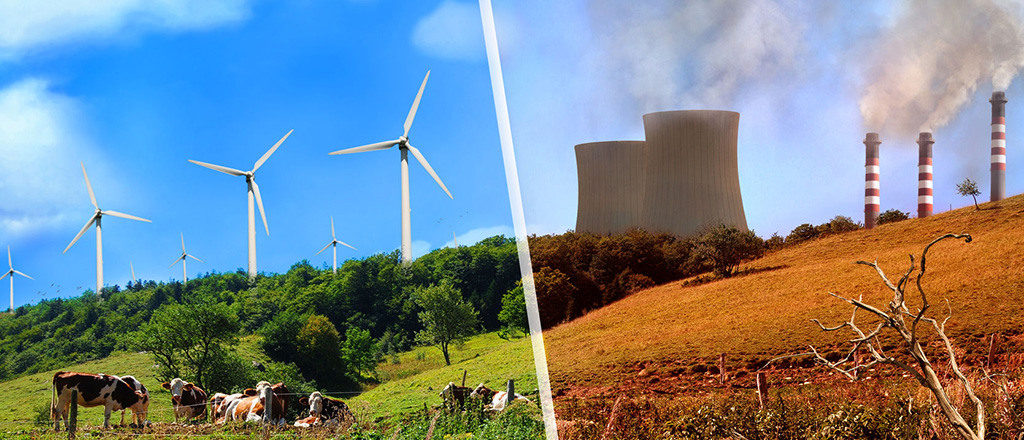The global energy landscape is undergoing a profound transformation as we grapple with the implications of climate change. The oil and gas industry, long the cornerstone of our energy infrastructure, is now facing unprecedented challenges. In recent years, the urgency to reduce greenhouse gas emissions has led to an increased focus on renewable energy sources. As we stand at the crossroads of tradition and innovation, it’s crucial to examine the current state of the oil and gas sector and understand the driving forces behind the transition to renewable energy.
The conventional oil and gas model, with its reliance on fossil fuels, has been the backbone of industrialization and economic growth for decades. However, this model is now being scrutinized for its environmental impact, prompting a shift towards cleaner alternatives. Governments, businesses, and consumers alike are recognizing the need for sustainable practices. The rise of electric vehicles, advancements in solar and wind technologies, and the growing support for carbon-neutral initiatives indicate a seismic shift towards a more sustainable energy future.
Challenges and Opportunities in the Transition

As we navigate this transition, it’s essential to acknowledge the challenges and opportunities that lie ahead. One of the primary challenges is the existing infrastructure and investment tied to the oil and gas industry. Decades of development and trillions of dollars have been invested in extraction, refining, and distribution networks. Adapting these systems to accommodate renewable energy sources requires not only technological innovation but also significant financial investments.
However, challenges often come hand-in-hand with opportunities. The transition to renewable energy opens up new avenues for job creation, innovation, and economic growth. Countries and companies that proactively embrace this change can position themselves as leaders in the emerging green economy. Investments in research and development, coupled with policies that incentivize renewable energy adoption, can create a robust foundation for a sustainable and prosperous future.
If you need a loan to invest in sustainable energy solutions you will have to file a form 1098.
Technological Innovations Driving Change
Technological advancements play a pivotal role in shaping the future of energy. The rapid evolution of battery storage, for instance, is addressing the intermittent nature of renewable sources, making them more viable for widespread adoption. Smart grids, artificial intelligence, and the Internet of Things are revolutionizing energy management, enhancing efficiency, and reducing waste.
In addition to improving the efficiency of renewable energy, technological innovations are also impacting traditional oil and gas operations. Enhanced oil recovery techniques, carbon capture and storage, and the utilization of artificial intelligence in reservoir management are examples of how the industry is striving to reduce its environmental footprint. This intersection of technology and sustainability is indicative of a broader trend where innovation becomes the driving force behind a more environmentally conscious energy sector.
Many car companies started producing more electric vehicles. You can rent and try some by using limo for rent in Denver.
The Role of Policy and Global Collaboration
Realizing a sustainable energy future requires more than technological innovation; it demands coordinated efforts on a global scale. Policymakers play a critical role in shaping the trajectory of the energy transition. Governments worldwide need to implement clear and ambitious policies that encourage the adoption of renewable energy, discourage carbon-intensive practices, and provide a framework for a just transition for affected communities.
Global collaboration is equally vital. Climate change knows no borders, and addressing its impact requires a united front. International agreements, such as the Paris Agreement, provide a foundation for collective action. However, the challenge lies in translating these agreements into concrete policies and actions at the national and local levels. The cooperation of governments, businesses, and citizens is essential to create a sustainable energy ecosystem that transcends geopolitical boundaries. A theme park design company is currently working on a renewable energy-themed project.
The Path Forward: A Balanced Energy Portfolio
As we navigate the complex landscape of energy transition, it becomes evident that a balanced approach is key. Rather than viewing the shift to renewable energy as an outright replacement for oil and gas, a more pragmatic strategy involves integrating various energy sources into a diversified portfolio. This approach acknowledges the current reliance on fossil fuels while actively investing in and promoting the development of renewable alternatives. Additionally, fostering technological innovation, such as advancements in web development in Chicago, plays a crucial role in shaping a sustainable future.
A balanced energy portfolio allows for a smoother transition, mitigating the economic impact on regions heavily dependent on the traditional energy sector. It ensures energy security while reducing the environmental footprint over time. Moreover, embracing a diverse range of energy sources enhances resilience in the face of unforeseen challenges, providing a more sustainable and adaptive energy infrastructure for the future.
If you want to start using electric vehicles you can try one by renting it from rent a car Beograd.
The Role of Businesses in Sustainable Transformation
While governmental policies and global collaboration are instrumental in steering the energy transition, the role of businesses cannot be overstated. Corporations wield significant influence over the energy landscape through their operational choices, investments, and innovations. In recent years, there has been a notable shift in corporate strategies towards sustainability. Oil soluble banana flavoring companies are increasingly recognizing that aligning their operations with environmentally friendly practices is not only a moral imperative but also a strategic necessity. This trend reflects a broader awareness of the interconnectedness between business decisions and their impact on the environment.
Sustainable business practices go beyond mere compliance with regulations; they involve a holistic approach that considers environmental, social, and governance (ESG) factors. Many forward-thinking companies are setting ambitious carbon reduction goals, investing in renewable energy projects, and incorporating circular economy principles into their operations. This not only enhances their reputation but also future-proofs their business in a world where consumers and investors are placing greater emphasis on ethical and sustainable practices.
Empowering Local Communities
As we envision a future powered by renewable energy, it is imperative to address the impact of this transition on local communities. Historically, regions heavily reliant on the oil and gas industry have faced economic challenges during periods of change. Recognizing this, a critical aspect of the energy transition is empowering local communities to actively participate in and benefit from the shift to renewable energy.
Community engagement programs, skills development initiatives, and the creation of alternative employment opportunities are essential components of a just transition. By involving local communities in the decision-making processes and ensuring that the benefits of renewable energy projects are shared equitably, we can foster a sense of ownership and cooperation. This, in turn, not only mitigates the social impact of the transition but also contributes to the long-term success and acceptance of sustainable energy initiatives. In a parallel vein, the best company that provides web application programming in Green Bay is crucial for businesses aiming to establish a strong online presence and contribute to the digital evolution of their community.
The Evolving Role of Energy Consumers
In the landscape of the future, energy consumers are emerging as active participants rather than passive recipients. The advent of decentralized energy systems, smart grids, and consumer-oriented technologies is transforming the way we produce and consume energy. As consumers gain more control over their energy choices, they become key players in shaping the demand for sustainable practices.
The concept of prosumers, individuals who both consume and produce energy through technologies like solar panels, is gaining traction. This shift not only reduces dependence on centralized energy grids but also democratizes the energy landscape. Consumers are increasingly making choices based on environmental considerations, demanding transparency from energy providers, and supporting initiatives that prioritize renewable sources. This changing dynamic has the potential to revolutionize the energy market, driving further innovation and sustainability. Embracing eco-friendly practices extends to various aspects of our lives, including car air conditioning in Toronto. As individuals strive for more sustainable choices, the demand for energy-efficient and environmentally friendly automotive technologies is on the rise.
Overcoming Regulatory and Financial Hurdles

Despite the momentum towards renewable energy, significant regulatory and financial challenges persist. In many jurisdictions, existing regulatory frameworks favor traditional energy sources, creating barriers to the widespread adoption of renewables. Governments must undertake comprehensive regulatory reforms to create an enabling environment for clean energy investments. Also, many small businesses like a company that provides appliance repair in Charlotte NC try to use more renewable energy every day.
Additionally, financing the transition to renewable energy remains a formidable task. While the costs of renewable technologies have decreased over the years, substantial upfront investments are still required. Governments, financial institutions, and international organizations need to collaborate to develop innovative financing mechanisms, such as green bonds and incentives for private sector investments. Overcoming these hurdles is crucial for accelerating the pace of the energy transition and achieving meaningful and sustainable change.
If you work in the fashion industry and you want to start using eco-friendly materials you should enroll in a fashion business course to learn more about it.
The Intersection of Artificial Intelligence and Energy
Artificial intelligence (AI) is increasingly becoming a transformative force across various industries, and the energy sector is no exception. The integration of AI into energy systems holds the potential to optimize operations, enhance efficiency, and facilitate better decision-making. Machine learning algorithms can analyze vast amounts of data to predict energy demand, optimize grid performance, and improve the overall reliability of energy systems.
Moreover, AI is instrumental in advancing the development of advanced materials for renewable energy technologies. From optimizing the efficiency of solar panels to improving the energy storage capacity of batteries, AI-driven innovations are pushing the boundaries of what is possible. The synergy between AI and renewable energy opens up new frontiers for technological breakthroughs, paving the way for a more intelligent and responsive energy infrastructure. Online platforms dedicated to renewable energy use the best hosting provider and it works great in combination with the AI.
Addressing Environmental Justice and Equity
As we transition to a more sustainable energy future, it is imperative to address issues of environmental justice and equity. Historically, marginalized communities have borne a disproportionate burden of environmental degradation and the adverse effects of traditional energy production. The shift to renewable energy must prioritize the inclusion of these communities, ensuring that they not only benefit from cleaner air and water but also actively participate in and derive economic opportunities from the transition.
Environmental justice considerations extend beyond national borders. Developing nations, often more vulnerable to the impacts of climate change, require support in adopting sustainable energy practices. International cooperation, technology transfer, and financial assistance are crucial components of a global effort to address environmental justice and ensure that the benefits of the energy transition are accessible to all.
Renewable energy will greatly help the wildlife and the rivers and lakes will be richer in fish. If you like fishing be sure to check a fishing forecast before you embark on your fishing trip.
The Emergence of Energy Storage Solutions
One of the critical challenges in integrating renewable energy into the grid is the intermittent nature of sources such as solar and wind. Energy storage solutions are emerging as a key enabler in overcoming this challenge. Advances in battery technology, pumped hydro storage, and other innovative storage solutions are enhancing the reliability and stability of renewable energy systems. If you want to install solar panels on your roof you can use the roofing services in Pennsylvania.
Energy storage not only addresses the intermittency of renewable sources but also plays a crucial role in grid resilience. During times of excess energy production, storage systems can store the surplus energy for use during periods of high demand or when renewable sources are not generating power. This capability not only improves the overall efficiency of the energy system but also contributes to grid stability and reliability.
If you want to sell your business so you can invest in sustainable energy you can contact M&A business advisors.
The Global Transition: Learning from Success Stories

While the challenges of the energy transition are formidable, there are success stories from around the world that offer valuable lessons. Countries like Denmark and Germany have successfully transitioned to a significant share of renewable energy in their grids. These success stories highlight the importance of long-term planning, policy consistency, and public engagement.
Denmark, for example, has been a pioneer in wind energy, with wind power constituting a substantial portion of its energy mix. The Danish experience underscores the importance of a supportive regulatory framework, community involvement, and continuous innovation. Germany’s Energiewende (energy transition) demonstrates the feasibility of integrating renewable energy into a highly industrialized economy through a combination of policy incentives, technological innovation, and public participation.
If you want to buy an eco-friendly house and help the environment in the process you can contact a mortgage company in Raleigh NC.
Looking Ahead: A Dynamic and Adaptive Energy Landscape
As we look ahead, the future of energy appears dynamic and adaptive, shaped by a confluence of technological, economic, and societal factors. The transition to renewable energy is not a one-size-fits-all endeavor; it requires tailoring strategies to the unique circumstances of each region. The ongoing evolution of energy systems demands flexibility and a willingness to embrace change.
In this dynamic landscape, continuous collaboration between governments, businesses, communities, and individuals is paramount. The journey toward a sustainable energy future is marked by challenges, but it is also characterized by unprecedented opportunities for innovation, economic growth, and environmental stewardship. By fostering a collective commitment to sustainable practices and embracing the transformative potential of emerging technologies, we can navigate the complexities of the energy transition and forge a path toward a more resilient and equitable energy future.













